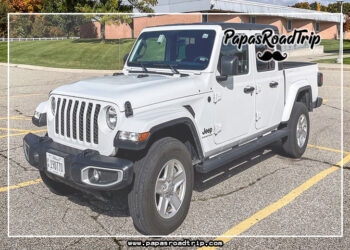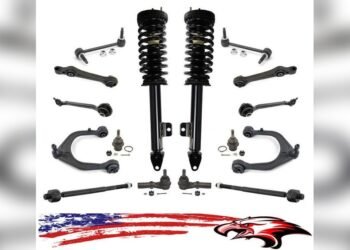Mixing coolant and water is a common question for car owners. Yes, you can mix them, but it’s important to do it correctly.
Using the right balance of coolant and water is crucial for your car’s engine. Coolant helps prevent overheating and freezing, while water aids in heat transfer. The mixture ensures your engine runs smoothly in all weather conditions. Too much water can cause rust, while too much coolant can reduce efficiency.
Understanding the right proportions and the types of coolants is vital. In this post, we will explore how to mix coolant and water properly, the benefits, and what to avoid. This knowledge will help you maintain your car’s engine and avoid costly repairs.
Importance Of Coolant In Cars
The importance of coolant in cars cannot be overstated. It is a vital component for maintaining the engine’s temperature. Without it, cars can overheat, leading to severe damage. Understanding why coolant is crucial helps in making informed decisions about vehicle maintenance.
Role Of Coolant
Coolant, also known as antifreeze, performs many vital functions:
- Temperature Regulation: Maintains engine temperature by absorbing excess heat.
- Prevents Freezing: Keeps engine fluids from freezing in cold weather.
- Corrosion Protection: Protects engine parts from rust and corrosion.
These functions ensure the engine runs smoothly and lasts longer.
Coolant Vs. Water
Many wonder if water can replace coolant. Here’s a quick comparison:
| Attribute | Coolant | Water |
|---|---|---|
| Temperature Regulation | Efficient | Moderate |
| Freezing Point | Low | High |
| Boiling Point | High | Low |
| Corrosion Protection | Yes | No |
Coolant is specially formulated to handle extreme conditions. Water alone cannot provide the same level of protection. Mixing coolant and water can work, but the ratio must be correct. Usually, a 50/50 mix is recommended. This mix ensures proper temperature regulation and corrosion protection.
Credit: penriteoil.com.au
Can You Mix Coolant And Water?
Mixing coolant and water is a common practice. It is essential for maintaining your vehicle’s engine. But is it always a good idea? Let’s dive into the details.
Pros And Cons
Mixing coolant and water has both benefits and drawbacks. Understanding these can help you make an informed decision.
- Pros:
- Improved Cooling: Water helps in better heat dissipation.
- Cost-Effective: Water is cheaper than coolant.
- Accessibility: Water is easily available.
- Cons:
- Corrosion Risk: Water can cause rust in the engine.
- Boiling Point: Water boils faster than coolant.
- Freezing Point: Water freezes quicker, causing engine damage.
Situations To Consider
There are certain situations where mixing coolant and water might be necessary or beneficial.
| Situation | Action |
|---|---|
| Emergency | Mixing is better than running dry |
| Hot Climate | Use more coolant for better heat resistance |
| Cold Climate | Use less water to avoid freezing |
Always refer to your vehicle’s manual for the best mixture ratio. Usually, a 50/50 mix of coolant and water is recommended. This provides a good balance of freezing and boiling protection.
Types Of Coolants
Choosing the right coolant for your vehicle is crucial. Different types of coolants exist, each with unique properties and benefits. Understanding these types helps you make an informed decision. Below, we explore three main types of coolants.
Inorganic Additive Technology (iat)
Inorganic Additive Technology (IAT) is a traditional type of coolant. It contains silicates and phosphates to prevent corrosion. IAT coolants are usually green. They are ideal for older vehicles.
Benefits of IAT:
- Effective in preventing rust.
- Affordable and widely available.
Drawbacks of IAT:
- Needs to be replaced every 2 years.
- Can be harmful to newer engines.
Organic Acid Technology (oat)
Organic Acid Technology (OAT) coolants are modern and advanced. They are free from silicates and phosphates. OAT coolants are typically orange or red. They are suitable for newer vehicles.
Benefits of OAT:
- Longer lifespan, up to 5 years.
- Better for high-mileage vehicles.
Drawbacks of OAT:
- More expensive than IAT.
- Not suitable for older vehicles.
Hybrid Organic Acid Technology (hoat)
Hybrid Organic Acid Technology (HOAT) combines IAT and OAT properties. It contains silicates for protection and organic acids for longevity. HOAT coolants are often yellow or pink. They work in a range of vehicle types.
Benefits of HOAT:
- Balanced protection and longevity.
- Suitable for a variety of engines.
Drawbacks of HOAT:
- More costly than IAT.
- Not as widely available.
Understanding these coolants helps you choose the best option for your vehicle. Each type has its pros and cons. Select based on your vehicle’s needs and manufacturer’s recommendations.
Ideal Coolant Mixture Ratio
Mixing coolant and water is essential for your vehicle’s engine health. The right ratio ensures optimal performance, prevents overheating, and protects against freezing. An incorrect mixture can lead to serious engine problems. Understanding the ideal coolant mixture ratio is crucial for maintaining your engine’s efficiency and longevity.
Recommended Ratios
The recommended coolant mixture ratio is typically 50% coolant and 50% water. This balanced mix provides excellent protection in most conditions. Some manufacturers suggest a 60/40 or 70/30 ratio for extreme climates. Always check your vehicle’s manual for the best advice.
| Ratio | Coolant | Water |
|---|---|---|
| Standard | 50% | 50% |
| Extreme Cold | 60% | 40% |
| Extreme Heat | 70% | 30% |
Climate Considerations
Climate plays a significant role in determining the right coolant mixture. In colder regions, increase the coolant ratio to prevent freezing. A 60/40 mix is usually sufficient. For extremely cold climates, a 70/30 mix may be necessary. This higher concentration of coolant lowers the freezing point.
In hotter climates, the aim is to prevent overheating. A 50/50 or 60/40 mix works well. A higher water content helps with heat dissipation. Always ensure the mixture is appropriate for the climate you drive in. Using the wrong ratio can cause engine damage.
Steps To Mix Coolant And Water
Mixing coolant and water is essential for your car’s engine health. A proper mixture ensures the engine stays cool and functions efficiently. Follow these steps to get the right blend for your vehicle.
Required Tools
Before starting, gather the necessary tools. You will need a measuring cup, a clean container, and a funnel. Having these ready will make the process smoother and quicker.
Mixing Process
Begin by checking your vehicle’s manual for the correct coolant-to-water ratio. Most vehicles require a 50/50 mix. Pour the coolant into the clean container using the measuring cup. Next, add an equal amount of water to the container. Use the funnel to pour the mixture into your car’s coolant reservoir. Ensure there are no spills. Check the level to ensure it’s within the recommended range. That’s it! Your engine now has the right coolant mix for optimal performance.

Credit: www.youtube.com
Common Mistakes To Avoid
Mixing coolant and water seems simple. But there are common mistakes that can lead to engine issues. Here are some mistakes you should avoid.
Using Tap Water
Many people use tap water to mix with coolant. This is a big mistake. Tap water contains minerals and impurities. These can cause build-up in your engine. Over time, this build-up can lead to corrosion and damage. Always use distilled water for mixing. It’s pure and free of minerals.
Incorrect Mixture Ratio
Another common mistake is not following the correct mixture ratio. The ideal ratio is usually 50/50 coolant to water. This ensures the best protection for your engine. Too much water can reduce the coolant’s effectiveness. Too much coolant can also cause issues. Always check your vehicle’s manual for the correct ratio.
Here’s a quick guide:
| Coolant | Water | Climate |
|---|---|---|
| 50% | 50% | Normal |
| 60% | 40% | Cold |
| 70% | 30% | Extreme Cold |
Following these guidelines can help you avoid common mistakes. Use distilled water and ensure the correct ratio to keep your engine safe.
Maintaining Your Cooling System
Maintaining your cooling system is essential for your vehicle’s health. A well-maintained system ensures your engine runs smoothly. It prevents overheating and costly repairs. You might wonder if mixing coolant and water is wise. Let’s explore the best practices to keep your cooling system in top shape.
Regular Checks
Check your coolant level regularly. A low coolant level can cause engine damage. Open the hood and locate the coolant reservoir. Ensure the fluid reaches the “full” mark. If it’s low, add the recommended coolant. Mixing coolant and water is possible. Use distilled water to avoid mineral build-up.
Flushing The System
Flushing the system is vital for removing debris and old coolant. Over time, contaminants build up. These can clog the cooling system and reduce efficiency. To flush the system, drain the old coolant. Then, add a flush solution and run the engine. Finally, drain the solution and refill with fresh coolant and water. Follow your vehicle’s manual for specific instructions.

Credit: www.reddit.com
Signs Of Cooling System Problems
The cooling system in your vehicle is crucial. It keeps the engine at the right temperature. If this system fails, your car can face major problems. Understanding the signs of cooling system problems helps prevent serious damage.
Overheating Engine
An overheating engine is a clear sign of cooling system issues. The temperature gauge will rise quickly. You may notice steam coming from the hood. This can happen due to low coolant levels or a faulty thermostat. Ignoring this can lead to engine damage.
Coolant Leaks
Coolant leaks are another sign of trouble. Check under your car for puddles of green, orange, or pink fluid. These colors indicate a coolant leak. Leaks can come from a damaged hose or a crack in the radiator. Addressing leaks early can prevent bigger issues.
Frequently Asked Questions
Can You Mix Coolant And Water?
Yes, you can mix coolant and water. Use a 50/50 ratio for best results.
What Happens If You Mix Coolant With Water?
Mixing coolant with water helps regulate engine temperature. Too much water can cause overheating, too much coolant can cause freezing.
How Do You Mix Coolant And Water?
To mix coolant and water, combine equal parts of each. Ensure it’s well mixed before adding to the radiator.
Is It Safe To Use Just Water Instead Of Coolant?
No, just water can cause overheating and corrosion. Always use a mixture of coolant and water.
What Type Of Water Should You Mix With Coolant?
Use distilled water to mix with coolant. Tap water can contain minerals that may damage the engine.
Conclusion
Mixing coolant and water is a common practice. It helps maintain engine temperature. Always use the right ratio for your vehicle. Check the owner’s manual for guidance. This prevents overheating or freezing. It also protects the engine from corrosion. Regularly check coolant levels to avoid problems.
Use distilled water to mix with coolant. It’s better for engine health. Proper maintenance extends your vehicle’s life. Stay informed and drive safely.

















